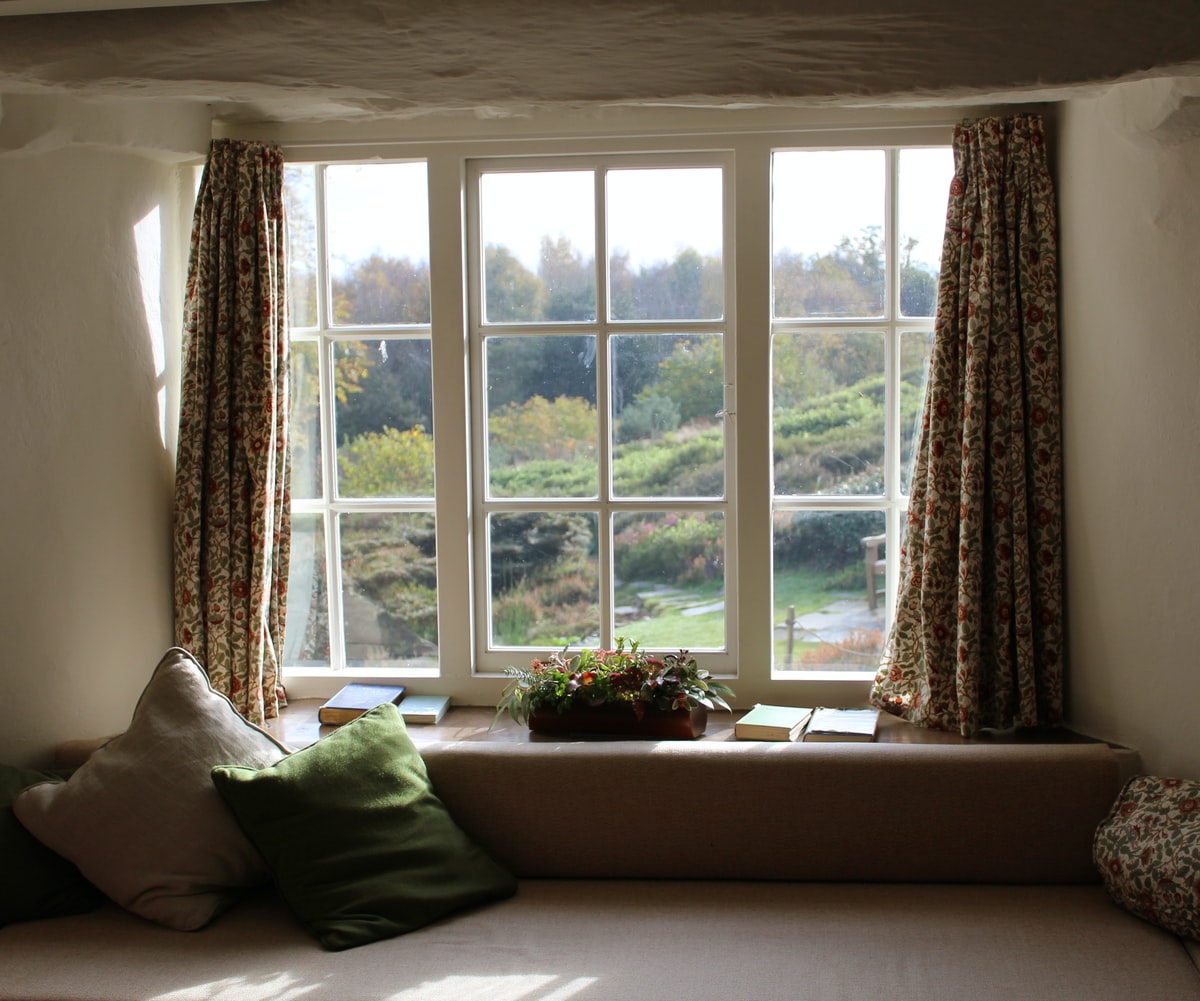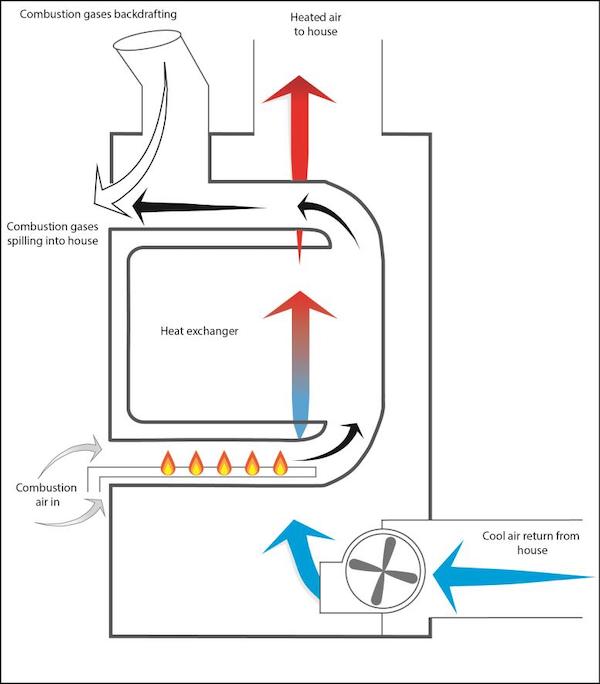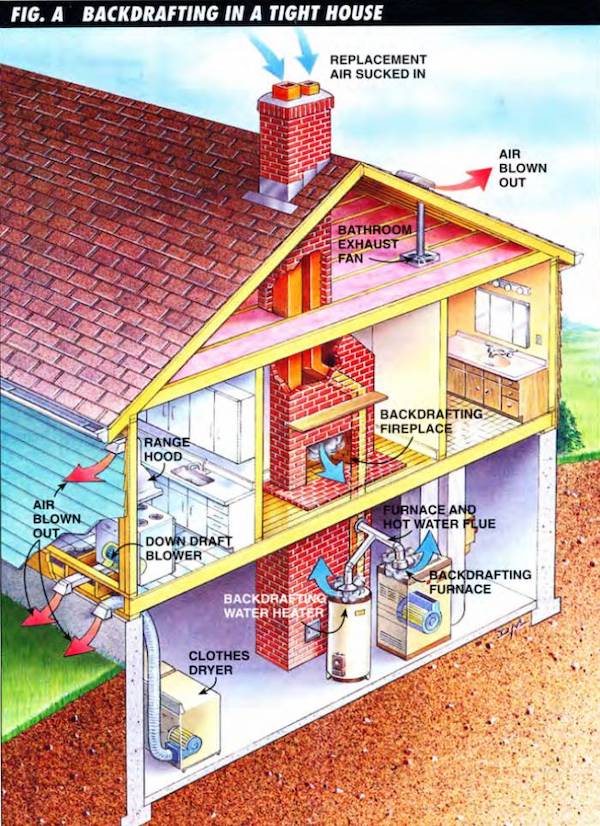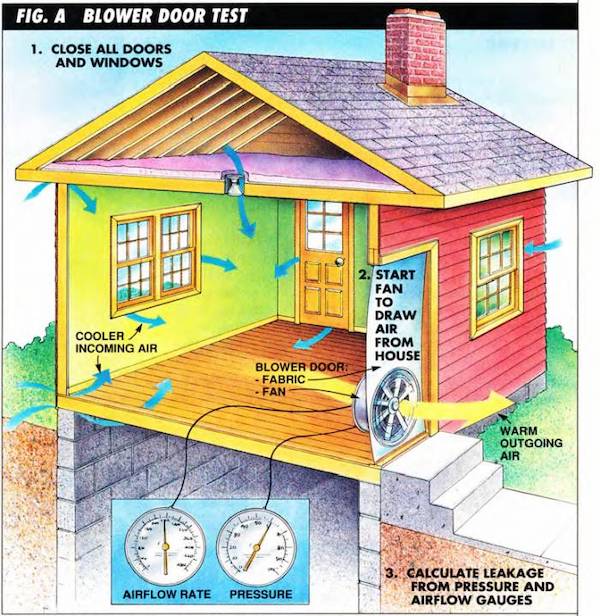
What is backdrafting?
Backdrafting is the reverse and unwanted flow of exhaust gases from fuel-fired appliances back into a home.
Fuel-fired appliances use the oxygen present in air for the combustion process, and also use air to dilute toxic gases in the exhaust vent pipe or chimney. Combustion and dilution air can be supplied directly to the appliance (direct-vent) or can be pulled from inside the home (natural vent). The image below illustrates the mechanisms of a naturally vented gas furnace.

In some circumstances, when the house is under negative pressure, air will try to make its way into the home by any means necessary. If fuel-fired appliances are not direct-vented, air might backdraft from the chimney or exhaust pipe causing combustion gases to spill into the house. (See image below).

Sometimes, backdrafting is obvious. If you have a wood stove or fireplace, you may occasionally see smoke escaping into the room for example. Or if you have a dark stain on the wall above your fireplace, this could indicate combustion product spillage into the room.
In other cases, spillage may not be so evident, in part because combustion gases, especially from natural gas and propane, are hard to detect. They are invisible and odourless. In addition, the space heating equipment and water heater are usually located away from the main living areas of the home and might not be visited often.
The causes of backdrafting
As we build more airtight homes, less natural air flows through the holes, cracks, and leaky areas through the building envelope to our living spaces (this is a good thing! see our blog post about airtightness here). However, the problem of backdrafting may occur when air is pulled out of the home via kitchen & bathroom exhaust fans or other exhaust devices like clothes dryers. The pressure inside the home then drops which may lead to combustion spillage or backdrafting.

Backdraft prevention
When building a new home, the use of direct-vented appliances is highly recommended (and even required by Building Codes in some areas) in order to separate the combustion process from wanted or unwanted air flows and depressurization issues in the home. Likewise, the proper installation and sizing of ventilation systems is crucial. It should be noted that a well-balanced ventilation system should not be mistaken for make-up air or combustion air. Make-up air may be required for exhaust appliances that induce negative pressures in the home.
When renovating an older drafty home, the unintended consequence could be introducing the risk of backdrafting the fuel-fired appliances. Something as simple as a new kitchen range hood fan can cause negative pressure and induce combustion spillage. Make sure to perform an exhaust devices depressurization test. This test will check whether make-up air is necessary to equalize pressure in the home and avoid backdrafting. Capital Home Energy has qualified Energy Advisors who can perform an exhaust device depressurization tests and speak with you about the causes and effects of backdrafting.
Remember, combustion spillage or backdrafting is a serious safety concern. It is extremely important to install Carbon Monoxide (CO) detectors as well as smoke detector on every floor in your home (check with local building codes on the requirements and where to locate CO and smoke detectors).
To remediate a potential combustion spillage problems, talk to TECA qualified ventilation contractor in your area.
